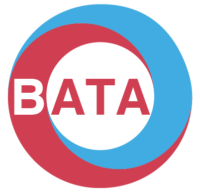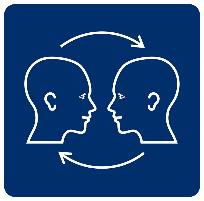ISAAC International and the AAC Editors – in conjunction with Informa (publishers of AAC) – have kindly provided ISAAC Chapters and their members with direct, free access to the following AAC articles:
1. Light, J. (1989). Toward a definition of communicative competence for individuals using augmentative and alternative communication systems. Augmentative and Alternative Communication, 5(2), 137–144. doi:10.1080/07434618912331275126
https://www.tandfonline.com/doi/abs/10.1080/07434618912331275126
2. Kent-Walsh, J., & McNaughton, D. (2005). Communication partner instruction in AAC: Present practices and future directions. Augmentative and Alternative Communication, 21(3), 195–204. doi:10.1080/07434610400006646
https://www.tandfonline.com/doi/abs/10.1080/07434610400006646
3. Beukelman, D. R., Fager, S., Ball, L., & Dietz, A. (2007). AAC for adults with acquired neurological conditions: A review. Augmentative and Alternative Communication, 23(3), 230–242. doi:10.1080/07434610701553668
https://www.tandfonline.com/doi/full/10.1080/07434610701553668
4. Binger, C., Kent-Walsh, J., Berens, J., Del Campo, S., & Rivera, D. (2008). Teaching Latino parents to support the multi-symbol message productions of their children who require AAC. Augmentative and Alternative Communication, 24(4), 323–338. doi:10.1080/07434610802130978
https://www.tandfonline.com/doi/full/10.1080/07434610802130978
5. McNaughton, D., Rackensperger, T., Benedek-Wood, E., Krezman, C., Williams, M. B., & Light, J. (2008). “A child needs to be given a chance to succeed”: Parents of individuals who use AAC describe the benefits and challenges of learning AAC technologies. Augmentative and Alternative Communication, 24(1), 43–55. doi:10.1080/07434610701421007
https://www.tandfonline.com/doi/full/10.1080/07434610701421007
6. Clarke, M., & Wilkinson, R. (2008). Interaction between children with cerebral palsy and their peers 2: Understanding initiated VOCA-mediated turns. Augmentative and Alternative Communication, 24(1), 3–15. doi:10.1080/07434610701390400
https://www.tandfonline.com/doi/full/10.1080/07434610701390400
7. Sigafoos, J., Green, V. A., Payne, D., Son, S.-H., O’Reilly, M., & Lancioni, G. E. (2009). A comparison of picture exchange and speech-generating devices: acquisition, preference, and effects on social interaction. Augmentative and Alternative Communication, 25(2), 99–109. doi:10.1080/07434610902739959
https://www.tandfonline.com/doi/full/10.1080/07434610902739959
8. Branson, D., & Demchak, M. (2009). The use of augmentative and alternative communication methods with infants and toddlers with disabilities: A research review. Augmentative and Alternative Communication, 25(4), 274–286. DOI: 10.3109/07434610903384529
https://www.tandfonline.com/doi/full/10.3109/07434610903384529
9. Trottier, N., Kamp, L., & Mirenda, P. (2011). Effects of peer-mediated instruction to teach use of speech-generating devices to students with autism in social game routines. Augmentative and Alternative Communication, 27(1), 26–39. doi:10.3109/07434618.2010.546810
https://www.tandfonline.com/doi/full/10.3109/07434618.2010.546810
10. Anderson, K., Balandin, S., & Clendon, S. (2011). “He Cares About Me and I Care About Him.” Children’s Experiences of Friendship with Peers who use AAC. Augmentative and Alternative Communication, 27(2), 77–90. doi:10.3109/07434618.2011.577449
https://www.tandfonline.com/doi/full/10.3109/07434618.2011.577449
11. Simeonsson, R. J., Björck-Akessön, E., & Lollar, D. J. (2012). Communication, Disability, and the ICF-CY. Augmentative and Alternative Communication, 28(1), 3–10. doi:10.3109/07434618.2011.653829
https://www.tandfonline.com/doi/full/10.3109/07434618.2011.653829
12. Flores, M., Musgrove, K., Renner, S., Hinton, V., Strozier, S., Franklin, S., & Hil, D. (2012). A comparison of communication using the Apple iPad and a picture-based system. Augmentative and Alternative Communication, 28(2), 74–84. doi:10.3109/07434618.2011.644579
https://www.tandfonline.com/doi/full/10.3109/07434618.2011.644579







